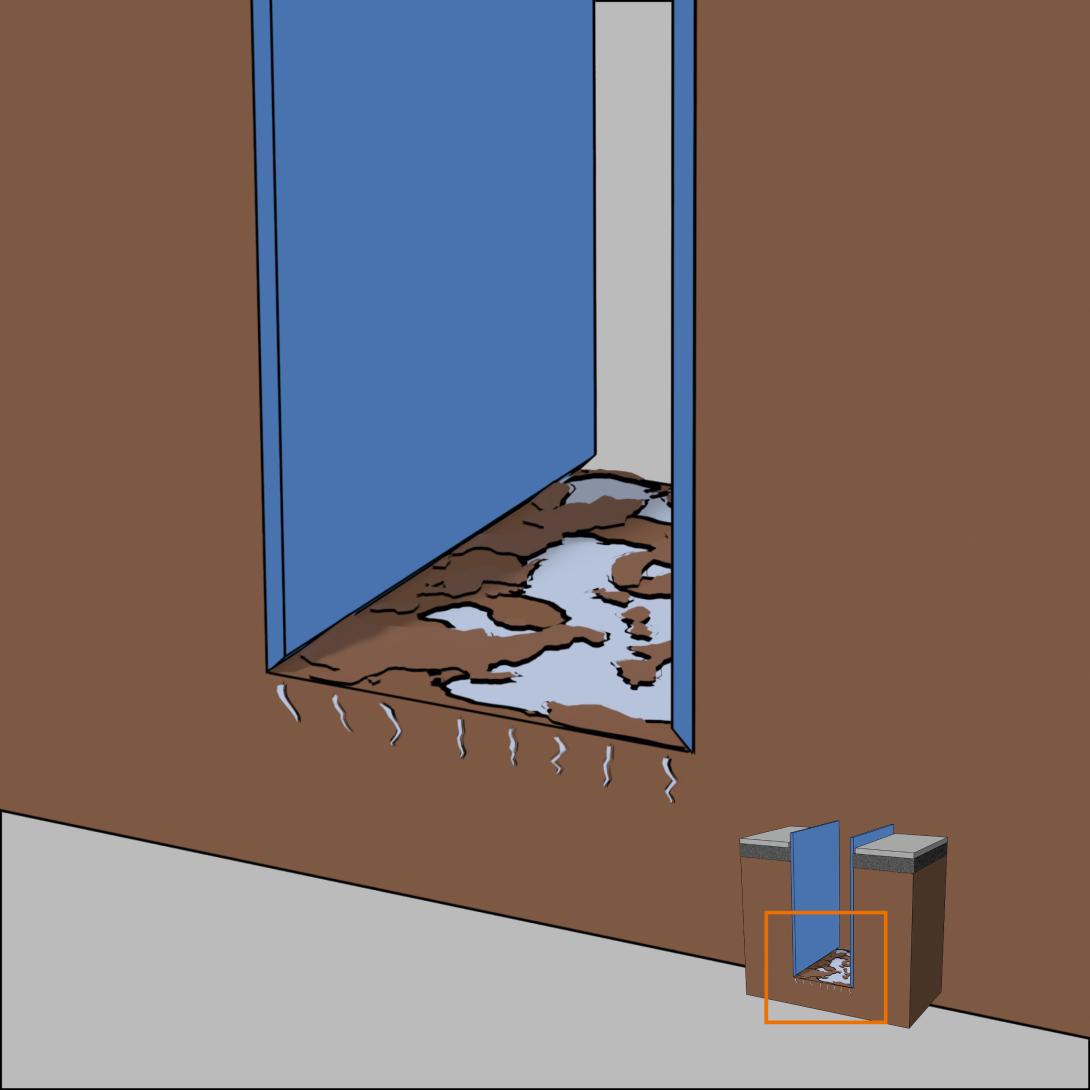Preparing the trench bottom
Checking depth and position
1 Set up laser. In summer, take into account the possible refraction of light.
2 Surveyor’s rod
Preparing the trench bottom

Do not loosen the soil at the trench bottom
When the full trench depth is reached, the soil below this level should not be broken up or loosened unnecessarily.
Use excavator shovels (buckets) without teeth. Excavate only the material that is necessary, and do not break up or loosen the soil beneath the trench bottom unnecessarily.
Preparing the trench bottom
Inspect the trench bottom for suitability
The trench bottom must be compactable and able to bear loads.
If there is damp, soft or mushy soil in the bottom of the trench
➔ the trench bottom cannot bear loads.
To be avoided:
- soft, mushy soil in the trench bottom,
- standing water in the trench bottom,
- a soaked trench bottom,
- a frozen trench bottom.
Checking if the trench bottom can bear loads
Inspect the load-bearing capacity of the trench bottom, e.g. with a light/dynamic drop-weight tester.
If the planned trench bottom cannot bear loads,
installing a foundation layer (replacing the soil) may be necessary, for example.

Checking if the trench bottom can bear loads
If the trench bottom cannot bear loads,
the pipes may settle or change position (deformation/cracking).
Checking if the trench bottom can bear loads

Additional foundation layer (soil replacement) if the load-bearing capacity is too low
Excavate to the depth specified by the site manager/foreperson
1 Replace soil that has insufficient load-bearing capacity.
Checking if the trench bottom can bear loads

Additional foundation layer (soil replacement) if the load-bearing capacity is too low
Excavate down to the load-bearing substrate as specified by the site manager/foreperson.
Lower the trench shoring step-by-step as excavation proceeds.
1 New trench bottom on load-bearing substrate.
The result: a new, deeper, load-bearing trench bottom.
Preparing the foundation layer

Lining the foundation layer (or entire pipe embedment) with fabric
Flowing water should not be allowed to wash away soil.
If necessary:
Line the lower part of the trench with fabric.
Place the fabric in the trench:
1 attach the fabric to the trench wall/shoring, and
2 cover the load-bearing substrate at the trench bottom.
Explanation:
The pipe embedment
encompasses the upper and lowerbedding layers, the side fill and the covering layer (and foundation layer, if installed).
Preparing the foundation layer
Installation of suitable material 1 as specified by the construction manager/foreperson.
Before each installation stage, raise the shoring just enough to allow for the material to be added.
Preparing the foundation layer

With each installation stage, raise the shoring just enough to allow for the material to be added.
Distribute the material evenly, and then compact the material (in multiple passes).
Check trench depth.
Preparing the foundation layer
Compact the foundation layer and use a fabric layer to protect it from being washed away.








